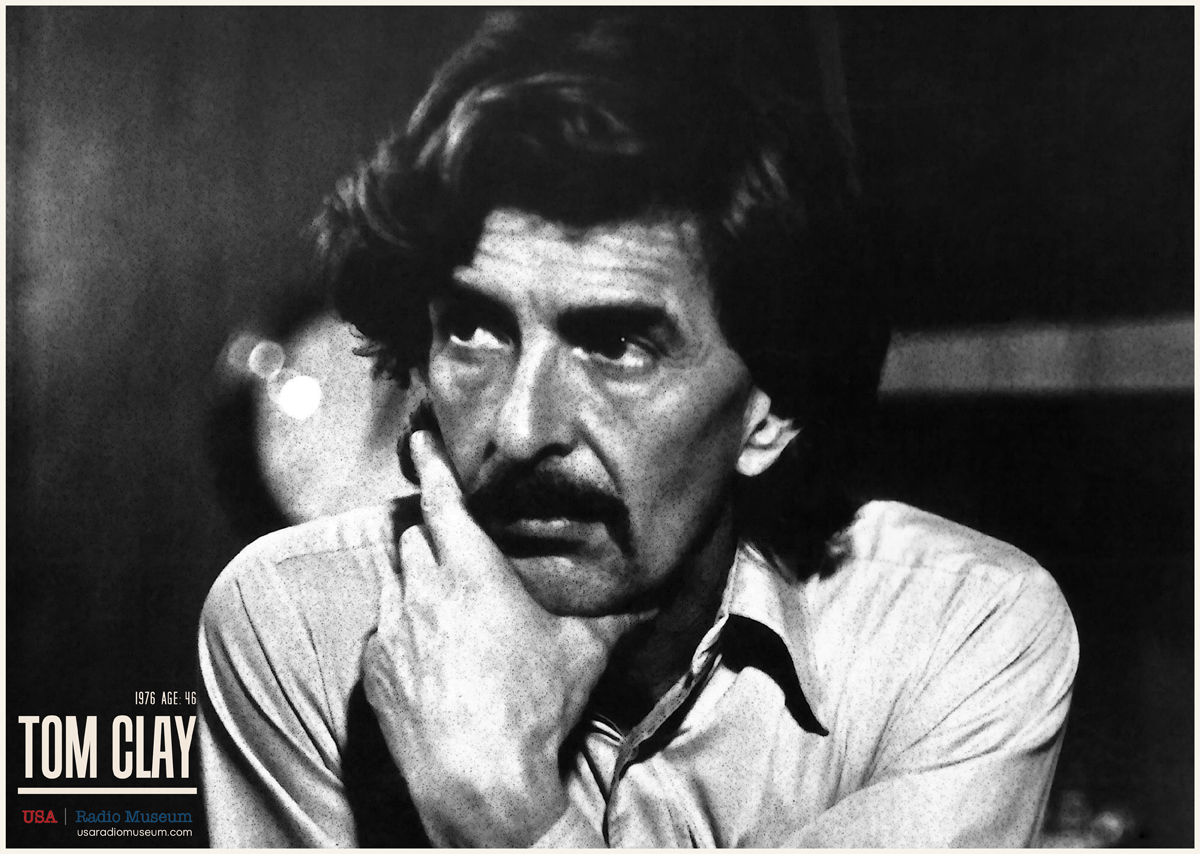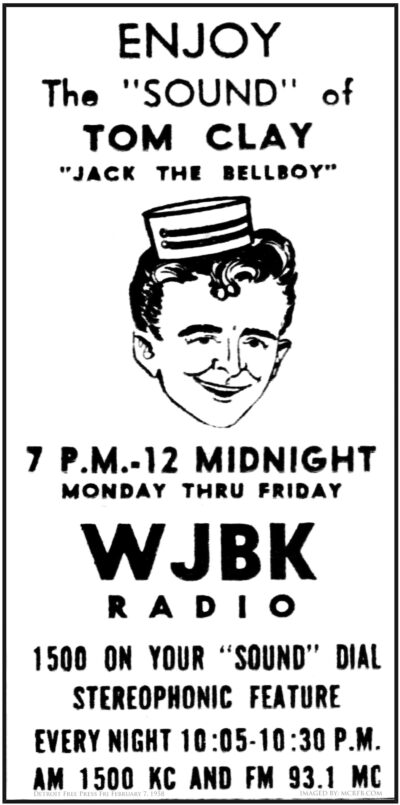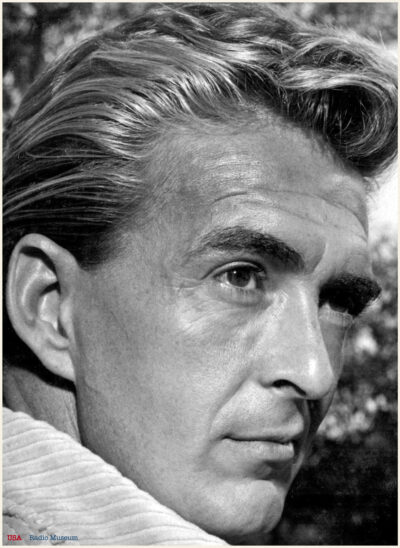Tom Clay: A Dynamic DJ's Journey Through Radio Broadcasting History Born: August 20, 1929, New York City, U.S. Died: November 22, 1995, Los An
Tom Clay: A Dynamic DJ’s Journey Through Radio Broadcasting History
Born: August 20, 1929, New York City, U.S.
Died: November 22, 1995, Los Angeles, California, U.S.
Tom Clay, born Thomas Clague, is a name that resonates with radio enthusiasts and historians alike. His career spanned decades, leaving its mark in Detroit, Los Angeles, and beyond, amid a backdrop of personal controversies and cultural milestones. Clay’s legacy is one of transformation, resilience, and a love for radio that propelled him through the turbulent times of the broadcasting industry.
Beginnings: Radio Career Synopsis
Born in New York City, Tom Clay started his radio career in Buffalo, New York, at WWOL in late 1954. His charisma and energy soon caught the attention of listeners, leading him to Cincinnati’s WSAI, where he hosted the 7 p.m. to midnight slot. Unfortunately, Clay’s time at WSAI was cut short due to a format shift, but this detour led him to Detroit—a city that would define the golden years of his career.
Arriving at WJBK in 1957, Clay adopted the persona of “Jack the Bellboy,” captivating audiences with his distinct style and energy. His evening shows became a staple for Detroit’s youth, earning him widespread popularity. For two years, Clay remained a beloved voice on WJBK’s airwaves before being embroiled in the payola scandal—a pivotal event in radio history.
After WJBK dismissed him on November 23, 1959, Clay sought new opportunities and was hired by WBRB in Mt. Clemens, Michigan, by January 1960. By June of that year, he moved to WQTE in Monroe, Michigan, but his tenure was short-lived—just three months—due to a difference over station policy with station manager Richard Jones. Clay then took a bold step and relocated to California, where he spent two years working at KDAY in Los Angeles and even made appearances in several television series as an actor.
Clay eventually returned to Detroit in September 1963, launching his much-anticipated radio show at CKLW. However, his time there lasted only nine months, as he departed the station in June 1964, citing his inability to personally select and spin records as the reason for his resignation, but there would be more to this story (as detailed below). Following his departure, Terry Knight took over Clay’s 7 to 11 p.m. slot, as well as Sunday afternoons from 1 to 6 p.m. Knight, who had previously worked at WTRX in Flint, was no stranger to Detroit audiences—he had also performed as “Jack the Bellboy” on WJBK Radio 1500 in 1963.
Outside of his radio career, Clay was also a family man, married and the father of three children. His journey through various stations—marked by triumphs, controversies, and career shifts—reflected the ever-changing landscape of radio broadcasting in the 1950s and 60s.
Payola Scandal and Recovery
In May 1960, Detroit’s WQTE made a bold shift by eliminating deejay-controlled disk programming in favor of a strictly supervised “Fabulous 56” format. This marked a significant transition in the station’s approach to radio broadcasting.
The payola controversy, a widespread practice where DJs accepted payments from record companies to play specific songs, had disrupted Clay’s flourishing career. In November 1959, Clay admitted to receiving approximately $6,000 in payola over an 18-month period, leading to his dismissal from WJBK. He was among several Detroit DJs affected by the scandal, which ultimately reshaped the radio industry by tightening ethical guidelines and limiting DJs’ programming influence.
WJBK | Tom Clay [Jack the Bellboy] | 1958
Audio Digitally Remastered by USA Radio Museum
By 1960, Clay found a new home at WQTE, where the station was undergoing major transitions. Following WQTE’s announcement that “the era of big-name jockeys is over,” Eddie Chase exited the station, just months after Ed McKenzie left due to disagreements over programming policies. To further restructure the station, WQTE brought in Harv Morgan as the new program director while hiring Clay to join its remaining DJs, Ralph Binge and Danny Murphy.
In an effort to uphold integrity and distance itself from past controversies, WQTE required Clay and other DJs to sign an affidavit stating they would not accept payola. Morgan reassured that under the station’s newly implemented system, DJs would have no opportunity to engage in such practices. This move marked a fresh chapter for Clay as he worked to rebuild his reputation and continue his broadcasting career.
Despite this setback, Clay’s resilience saw him return to Detroit radio in 1960, despite his short tenure there-only three months-at WQTE. He openly expressed his frustrations with the evolving norms in the industry. In a letter to the trade, Clay lamented the loss of the DJ’s influence as a tastemaker—reflecting nostalgically on the days when DJs could play records on a whim, predict overnight hits, and sway public opinion.
WQTE | Tom Clay | March 12, 1960
Audio Digitally Remastered by USA Radio Museum
Rise at CKLW and Controversial International Beatles Booster Ball
After a three-year radio hiatus on the West Coast, Tom Clay’s return to Detroit radio was met with great anticipation when he launched his first show on CKLW on September 2, 1963. As a seasoned deejay known for his ability to connect with audiences, Clay quickly became a notable figure at the station. However, his time there was marked by creative limitations.
On June 19, 1964, Clay’s tenure at CKLW came to an “amiable termination” as he ultimately decided to leave—not due to disagreements over programming, as reported elsewhere, but because he was unable to personally select and spin his own records. Clay felt restricted in his ability to shape the sound of his show, which led him to resign. According to John Gordon, CKLW’s program director, station policies and existing contracts with engineers and AFTRA prohibited DJs from playing their own selections—a regulation that Clay struggled to accept.
Despite the controversy surrounding his departure, Clay had made a lasting mark at CKLW, particularly with his ambitious International Beatles Booster Ball initiative.
Tom Clay’s determination and ingenuity truly shone during his quest to interview The Beatles in 1964. As detailed in David Carson’s Rockin’ Down the Dial, Clay defied skepticism from CKLW colleagues, including Dave Shafer, who doubted he could get close to the Fab Four. Undeterred, Clay boarded a plane to England and successfully conducted interviews with John, Paul, Ringo, and George—a feat that proved his critics wrong.
Upon returning to Detroit, Clay transformed his achievement into a promotional triumph for CKLW. He pressed the interviews onto a 45 rpm vinyl single, titled Official IBBB: International Beatles Booster Ball. The record featured two sides: Side 1 included interviews with John, Paul, and Ringo, while Side 2 showcased conversations with Ringo and George. The label bore the heartfelt slogan, “Remember We Don’t Like Them We Love Them,” emphasizing the deep admiration fans held for The Beatles. To make the promotion even more exciting, Clay held a contest, taking two lucky winners along on the trip and turning the experience into a major CKLW promotional event.
The Beatles Booster Ball skyrocketed in popularity. Clay encouraged listeners to send in one dollar, promising to send them something personal from The Beatles in return. The overwhelming response—over 40,000 letters arriving in just three days—spoke to the fervor of Beatles fans and Clay’s powerful influence on Detroit radio. The campaign raised between $185,000 and $300,000, but logistical hurdles soon caused frustration among fans. Some were disappointed to receive Beatles’ cigarette butts, while others never received anything at all. Complaints began to pour in, and Clay soon found himself facing a public relations nightmare.
As the Beatles prepared for their September Olympia Stadium concert in Detroit, Clay promised to take ten IBBB members backstage. But he never showed up. For many young fans, this moment solidified their growing doubts about Clay.
Clay later explained his absence to the Detroit Free Press (April 25, 1965), claiming that he had received a call from someone claiming to be associated with The Beatles, offering him the role of MC for their U.S. tour. He was told to check in at the Mark Hopkins Hotel in San Francisco, but upon arrival, staff said they had no record of him. Feeling humiliated, Clay did not return to Detroit. Instead, he headed west, settling in Los Angeles for a fresh start.
Tom Clay | IBBB Tom Clay Beatles Interview | 1964 (Recording released on vinyl; 1965)
Audio Digitally Remastered by USA Radio Museum
Amid the backlash, Clay penned an agonizing letter to his IBBB members, desperately trying to explain what had happened. In the letter—addressed to “My Dear Little Friend”—Clay poured out his remorse:
“Do you honestly believe that I’m a liar . . . a crook . . . a phony?”
He admitted that he had struggled to handle the overwhelming response, losing applications and failing to fulfill all requests.
“It has been so long since I last heard the sound of your laughter and oh, how I miss that beautiful sound. You breathe new life into a bitter, ready-to-give-up DJ.”
As a final effort to regain trust, Clay launched a plan to take two IBBB members to England to meet The Beatles that summer in 1964. He offered members the chance to pledge their faith by purchasing a long-playing record of his Beatles interviews for $2—with the winners selected from those buyers. However, the idea flopped, with only 600 responses out of 17,000 letters mailed.
Reflecting on his missteps, Clay told the Free Press:
“I’ve never been a con jockey. I’ve never tried to gyp the kids and get rich off them. I don’t want that. What I found with those kids is love.”
His departure from CKLW signaled the end of an era, but his legacy as a risk-taking, emotionally charged radio personality remained unforgettable.
CKLW | Tom Clay | September 2, 1963
Audio Digitally Remastered by USA Radio Museum
Creative Expression and “Whatever Happened To . . . .”
During his time on CKLW, Clay also demonstrated his flair for storytelling through his composition “Whatever Happened To.” This reflective piece, recited against the backdrop of “More” from the Mondo Cane soundtrack, captured the sentiments of Detroit’s youth during the social-transformative years of the early 1960s. Clay’s ability to connect with audiences through emotion and narrative added another dimension to his broadcasting talent.
CKLW | Tom Clay [What Ever Happened To . . .] | 1964
Audio Digitally Remastered by USA Radio Museum
Transition to Los Angeles: Clay Masters to Motown
Long after his departure from CKLW, Tom Clay relocated to Los Angeles for a second time, where new opportunities awaited. By the early 1970s, Clay found himself freelancing in the California radio landscape, landing a temporary two-week vacation fill slot at local station KGBS. It was here that he created a powerful eight-minute production, expressing his philosophy on the contemporary world situation at the moment.
The recording wove together music and narration, interspersing historical audio clips focusing on Martin Luther King Jr., Bobby Kennedy, and John F. Kennedy. On May 22, 1971, Clay aired the production for the first time. He was off the next day, but when he returned on May 24, KGBS colleagues informed him that listeners had repeatedly requested to hear the piece again. The overwhelming response to the recording prompted Clay to seek broader distribution for his work.
Recognizing the impact of the project, Clay turned over the produced master of “What the World Needs Now” to Motown Records (MoWest). The record became one of Motown’s rare master purchases, as West Coast A&R chief Dave Bell re-cut the production down from eight minutes to six minutes and 20 seconds on June 1, 1971, preparing it for a rushed national release.
Clay had initially promised to send free copies to listeners, receiving an astonishing 17,000 written requests for complimentary records before ultimately withdrawing the offer on June 1. In response, Dick Sherman, Motown’s West Coast sales director, committed to supplying Clay with free copies so he could satisfy the prior agreement with fans.
The Motown release marked a defining moment in Clay’s career, elevating him beyond traditional radio broadcasting into a space where he used audio storytelling as a form of cultural and historical reflection. The record blended spoken-word narration, music, and political messaging, showcasing Clay’s ability to craft emotionally resonant productions that transcended the medium of radio.
Tributes and Charitable Endeavors
Another notable project was Clay’s adaptation of Candy Geer’s poem “Six White Horses.” Written in the wake of President Kennedy’s funeral, the poem captured the nation’s grief. Clay’s recording, released with proceeds donated to charity, reflected his deep admiration for Kennedy. The irony of Clay’s passing on November 22, 1995—the same date as Kennedy’s assassination—adds a poignant note to his story.
Through these tributes, Clay demonstrated his ability to transcend the role of a DJ, using his platform to contribute to social and emotional reflection.
CKLW | Tom Clay | Six White Horses [Candy Geer]
Audio Digitally Remastered by USA Radio Museum
Legacy and Impact
Tom Clay’s career was marked by highs and lows, but his passion for radio and storytelling remained unwavering. From his beginnings in Buffalo to his iconic presence in Detroit and his creative resurgence in Los Angeles, Clay’s journey illustrates the transformative power of radio as a medium for connection and expression.
While controversies like the payola scandal and the challenges of his IBBB promotion may have tarnished parts of his reputation, Clay’s resilience and ability to adapt allowed him to leave an indelible mark on the industry. His innovative spirit, creative storytelling, and heartfelt tributes continue to resonate with those who appreciated Clay’s captive impact he held on radio at the time.
Conclusion
Tom Clay’s journey was one of reinvention—a testament to the power of passion, creativity, and unwavering determination to leave a mark on the airwaves. Through triumphs and setbacks, he remained a captivating voice in the golden era of Top 40 radio, shaping the musical landscape and connecting deeply with his listeners. His ability to capture cultural moments and create lasting memories made him more than just a broadcaster—he was a storyteller, an innovator, and a beloved figure in radio history.
Tragically, Clay’s life was cut short when he passed away from lung cancer at the age of 66 on November 22, 1995—a poignant date, as it coincided with the anniversary of President John F. Kennedy’s assassination, a young President that Clay deeply admired. Yet, his legacy did not fade with his passing. His voice, his creativity, and his impact continue to resonate, reminding us that the true measure of a broadcaster is not just the records they spin, but the connections they forge and the emotions they stir. Tom Clay’s story lives on—not just in history, but in the hearts of those who still remember hearing the sound of his unforgettable, iconic voice on the radio and beyond.
_____________________
A USARM Viewing Tip: On your mobile or tablet device? Finger-tap the above images inside the post and stretch image across your device’s screen for LARGEST digitized view.



